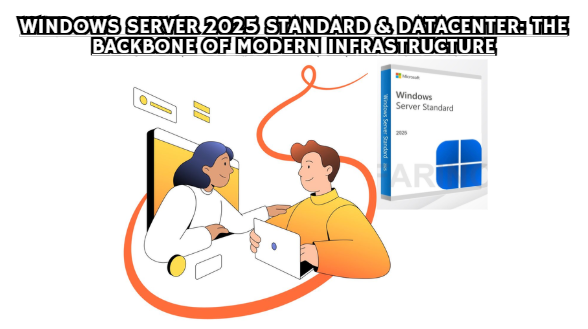
As the world shifts rapidly toward cloud-first computing, it’s natural to ask:
Is Windows Server 2025 still worth investing in when everything seems to be moving to Azure, AWS, and Google Cloud?
The answer, surprisingly, is yes — but it depends on what kind of business you are running.
Windows Server 2025 may look like a traditional system at first glance, but under the hood, it’s far from old-fashioned.
It’s a hybrid powerhouse designed to keep pace with both on-premises control and cloud-level flexibility — a rare combination in today’s IT landscape.
Cloud computing promises convenience, scalability, and global accessibility.
However, total dependence on the cloud can be risky — think downtime, recurring costs, or compliance limitations.
That’s where Windows Server 2025 shines.
It gives businesses direct control over their infrastructure, while maintaining seamless connectivity to Azure through features like:
Azure Arc Integration — manage hybrid workloads in one place.
Windows Admin Center 2025 — unified control for both local and virtual environments.
Automatic Cloud Sync — backup and replication without losing data sovereignty.
So, instead of replacing your datacenter, Microsoft has designed Windows Server 2025 to complement the cloud, not compete with it.
For startups and enterprises alike, monthly cloud bills can grow faster than expected.
Running everything in the cloud is convenient, but it’s not always cost-efficient — especially for workloads that are constant and predictable.
Windows Server 2025 with an Original Lifetime License Key allows you to:
Avoid ongoing subscription costs.
Run critical systems locally with full performance.
Scale to hybrid cloud only when needed.
This one-time investment model remains one of its biggest strengths in 2025 — giving IT managers predictable costs and long-term ROI.
Microsoft understands that most companies today can’t go fully cloud-native overnight.
That’s why Windows Server 2025 is engineered for hybrid scenarios — blending the best of both worlds.
You can:
Host your applications locally for speed and privacy.
Use Azure services for analytics, backup, or security enhancement.
Deploy virtual machines that sync with Azure Kubernetes Service (AKS).
In short, it’s the perfect transition platform — for businesses that want to modernize without losing full control of their infrastructure.
In industries like finance, healthcare, and government, data location and compliance are non-negotiable.
Many cloud platforms can’t guarantee data will stay within national boundaries — a serious issue for regulations such as GDPR or PDPA.
With Windows Server 2025:
Data can stay on-premises under full administrative control.
Secured-Core Server features add protection at hardware and OS levels.
Integration with Microsoft Defender and Azure Security Center offers enterprise-grade defense even for hybrid setups.
So, for organizations where privacy and control are mission-critical, Windows Server 2025 remains irreplaceable.
Modern hardware and Windows Server 2025’s updated kernel bring astonishing performance improvements:
Faster file transfers, lower latency, and reduced virtualization overhead compared to older versions.
Combined with features like:
DirectStorage support for lightning-fast data access,
Improved Hyper-V isolation, and
Optimized network throughput,
…Windows Server 2025 can often match or even outperform mid-tier cloud setups for certain workloads — especially those that require constant, high-speed local processing (like AI inference or database hosting).
Let’s summarize what makes Windows Server 2025 still worth it today:
✅ Worth It If:
You need control, security, and predictable costs.
Your organization runs constant workloads that don’t scale up and down frequently.
Compliance or data sensitivity requires local hosting.
You want a hybrid bridge to the cloud, not a full migration.
🚫 Not Ideal If:
Your business is fully cloud-native or uses serverless architectures.
You prioritize rapid scaling over control or cost predictability.
In other words, Windows Server 2025 isn’t trying to beat the cloud — it’s redefining what a modern hybrid server should be.
Windows Server 2025 proves that the era of local infrastructure is far from over.
It’s no longer about choosing between the cloud or local servers — it’s about combining both intelligently.
With its original license, you’re not just buying software —
you’re investing in stability, security, and a foundation that can adapt as your business evolves.
So yes — in 2025 and beyond, Windows Server 2025 is absolutely worth it for anyone who values control, reliability, and hybrid flexibility in an unpredictable digital world.